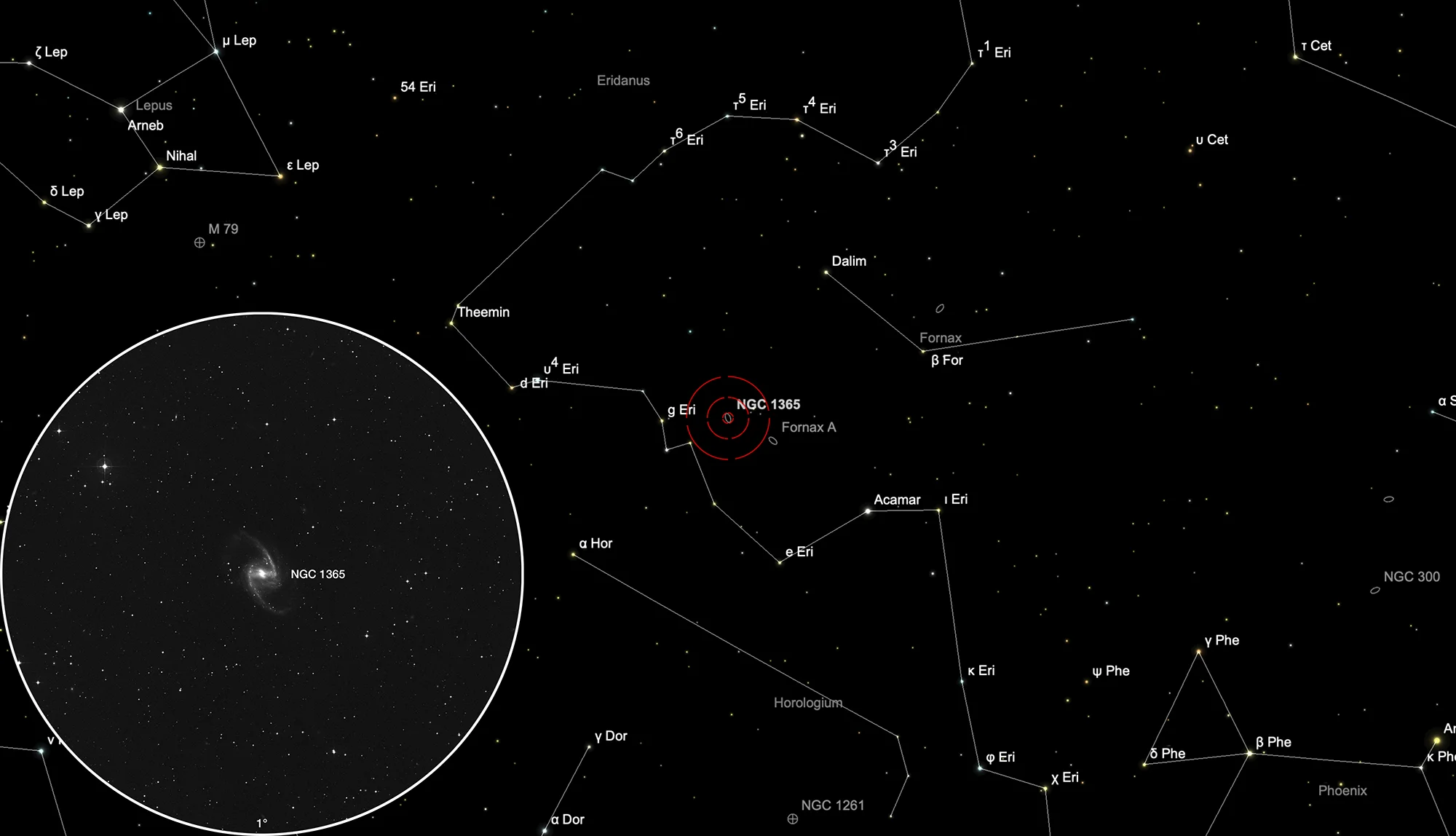Galaxy NGC 1365
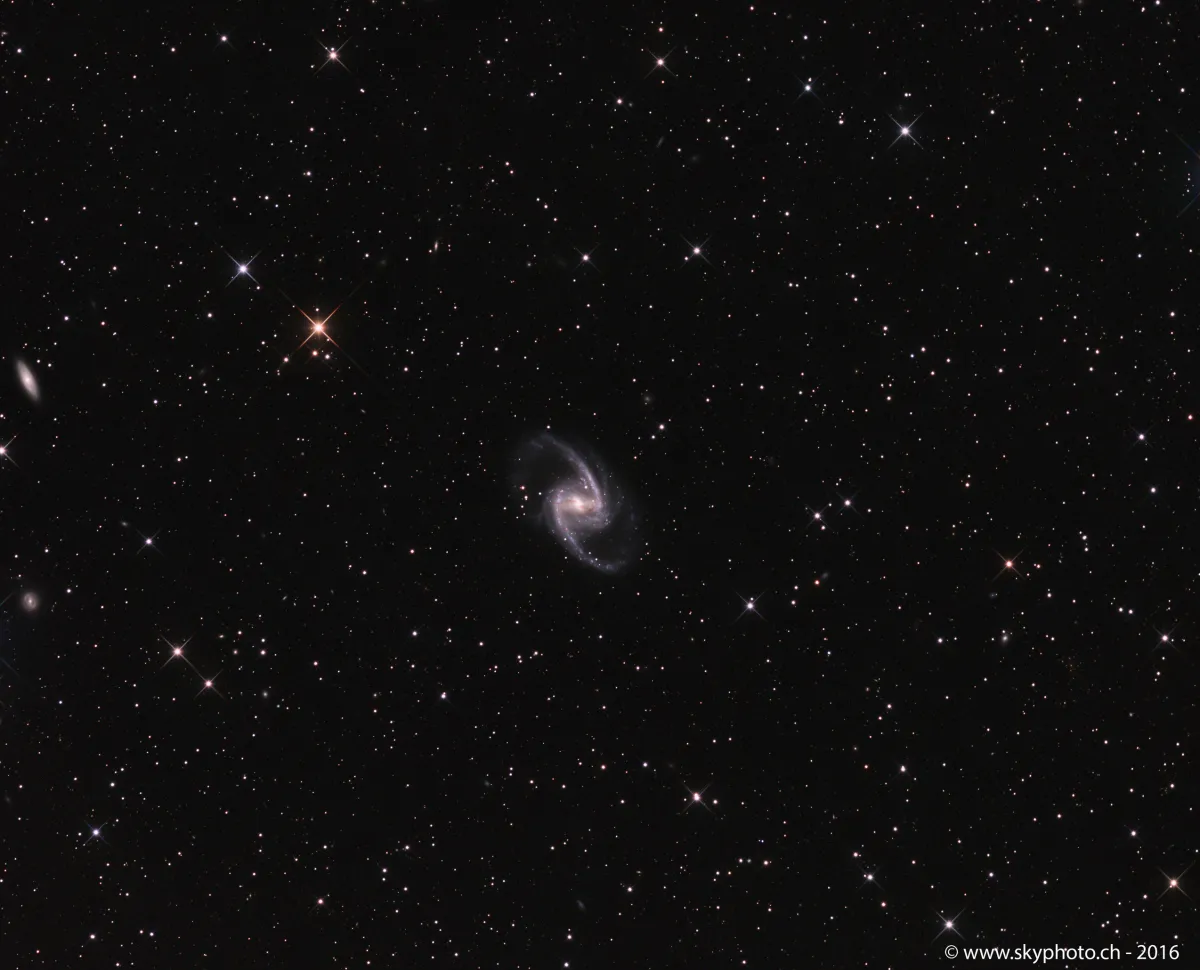
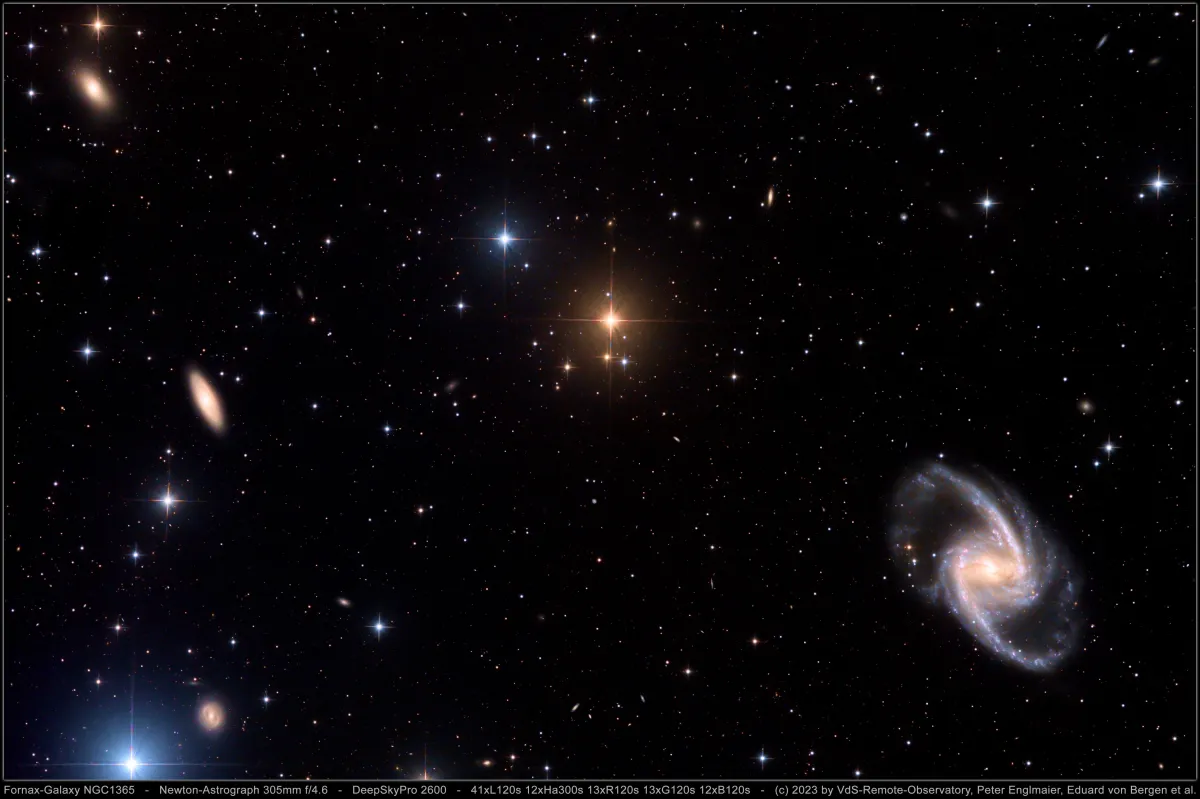
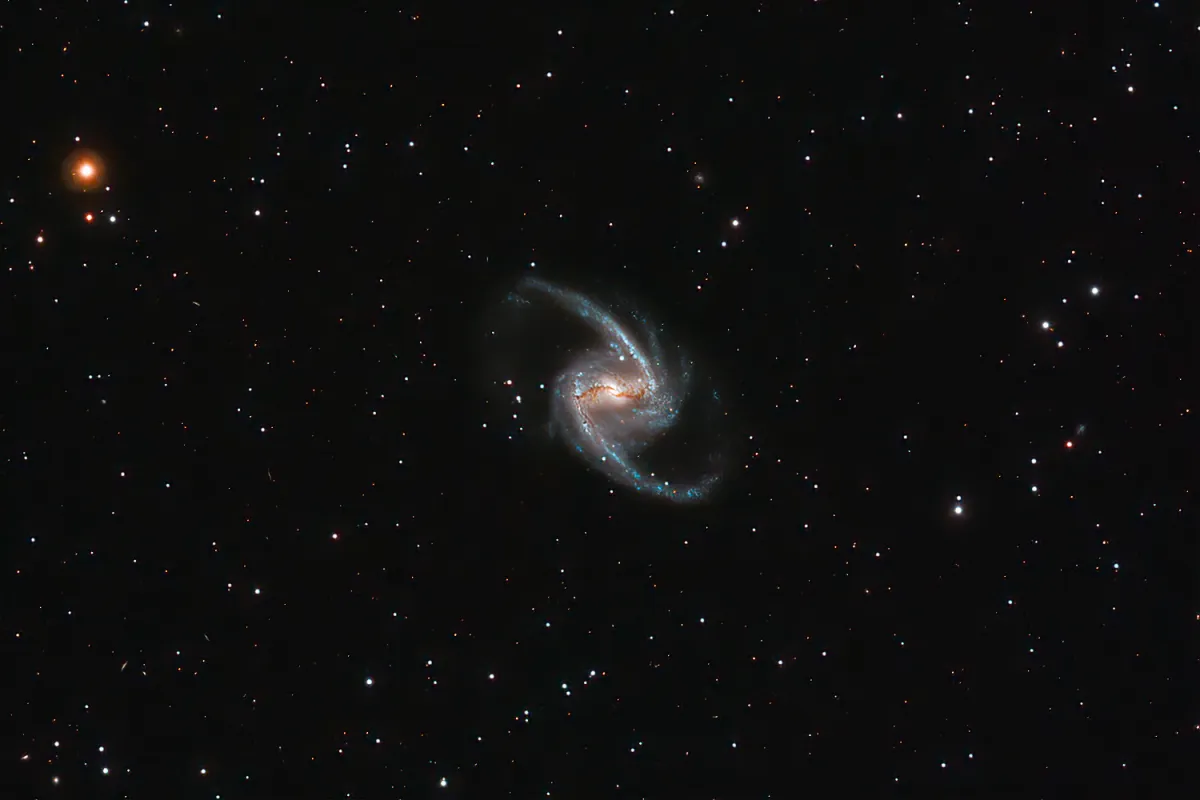
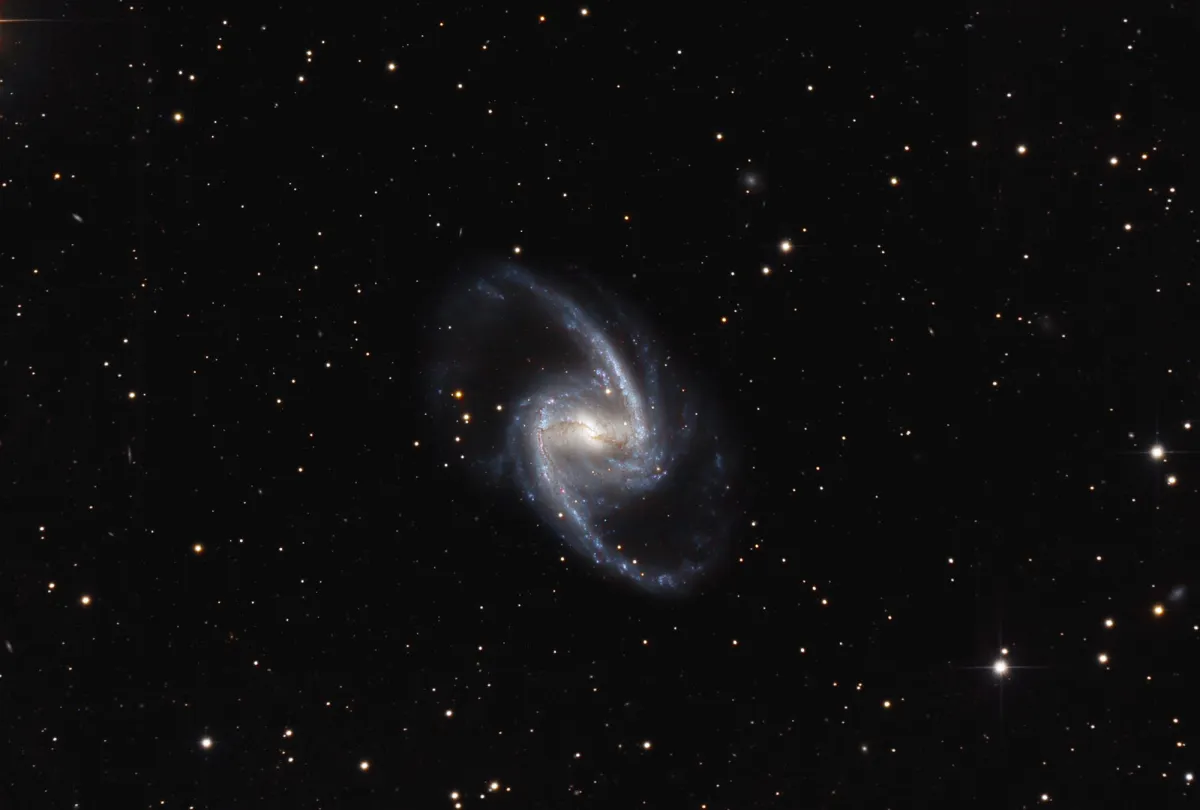
History
This galaxy was discovered by Scottish astronomer James Dunlop on 2 September 1826. He used the self-built 9-inch reflector at Paramatta, New South Wales. Unfortunately he made a transcription error and hence was not credited with the discovery in the GC or NGC. [50]
John Herschel independently discovered this galaxy on 28 November 1837 while conducting his sweeps at South Africa. He cataloged it has h 2552 and noted for sweep 801: «A very remarkable nebula. A decided link between the nebula M 51 and M 27. Center very bright; somewhat extended; gradually very much brighter in the middle; a star of 13 mag near the edge of the halo involved. The area of the halo very faint; general position of the longer axis 20.8° whole breadth = 3'.» On sweep 802 he noted: «Very bright, extended, resolvable nucleus; or has 2 or 3 stars involved; the preceding arc is the brighter. I thonk the oval is in some degree filled up to the south.» [11]
Physical Properties
NGC 1365 is a barred spiral galaxy of Seyfert 1 type with an active nucleus and ongoing star formation. It belongs to the Fornax cluster of galaxies.
| Designation | NGC 1365 |
| Type | Gx (SBb) |
| Right Ascension (J2000.0) | 03h 33m 36.7s |
| Declination (J2000.0) | -36° 08' 27" |
| Diameter | 11 × 6.2 arcmin |
| Photographic (blue) magnitude | 10.3 mag |
| Visual magnitude | 9.6 mag |
| Surface brightness | 14.1 mag·arcmin-2 |
| Position Angle | 32° |
| Redshift (z) | 0.005457 |
| Distance derived from z | 23.05 Mpc |
| Metric Distance | 17.930 Mpc |
| Dreyer Description | !! vB, vL, mE, rN |
| Identification, Remarks | h 2552; GC 731; ESO 358-17; MCG -6-8-26; VV 825; FCC 121; IRAS 03317-3618 |
Finder Chart
The galaxy NGC 1365 is located in constellation Fornax at a declination of -36°. In Switzerland it reaches only circa 6° above the horizon around November. Maybe on top of a mountain when Italy has no power for light pollution you could catch a glimpse. Better travel more south.
